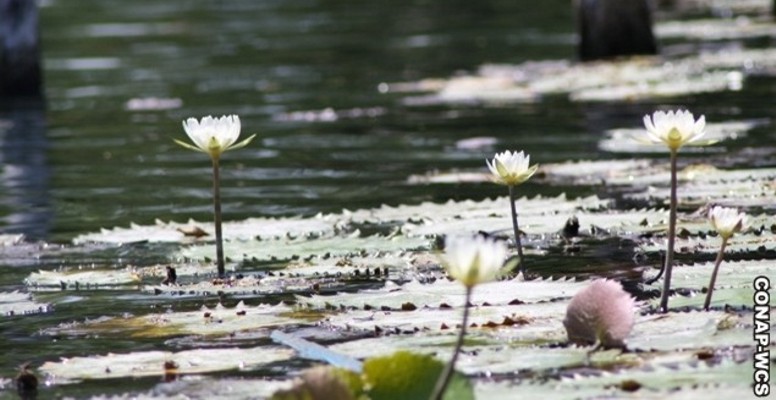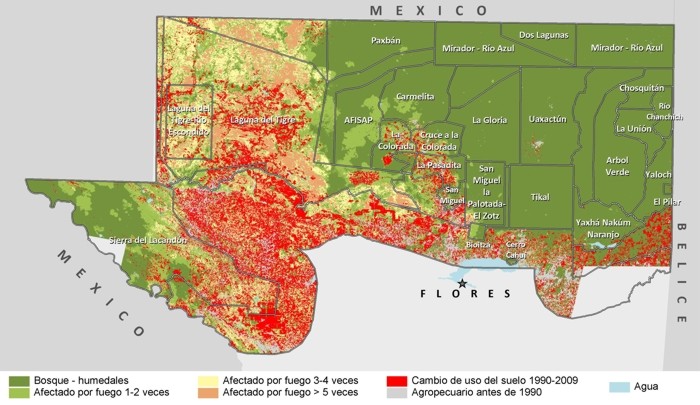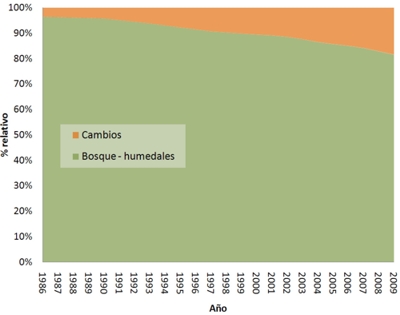 |
|
San Pedro Mártir River, Laguna del Tigre National Park
|
The MBR stands out as a globally significant area for many reasons, starting with its size. Together with the contiguous patches of habitat in Belize and Mexico, the reserve forms part of the largest wilderness area in Mesoamerica. The MBR contains 35% of remaining forest in Guatemala, and it is estimated to store 540 million tons of carbon in aboveground biomass alone. In terms of biodiversity, it is estimated that the reserve contains 513 species of bird, 122 mammals, 95 reptiles, 62 amphibians, and 2800 vascular plant species. In addition, the MBR is the only place in Guatemala where it is still possible for large-range species to survive, including the jaguar, puma, white-lipped peccary, and tapir , among others. Similarly, the MBR contains the last Scarlet Macaw population in the country.
 |
|
Changes in land use and fire frequency, MBR
|
 |
|
Reduction in forests and wetlands, MBR, 1986-2009
|
In spite of the multiple challenges faced over the past two decades, the MBR has managed to conserve a substantial amount of the habitat it contained when created. It is estimated that between 1990 and 2009, 287,000 hectares were converted to agricultural and livestock uses – 15% of the coverage that existed at the moment of declaration. In addition, is estimated that another 5.9% has been severely degraded due to being burned five or more times. This leaves a total of 1,530,000 hectares – 79% – of the original coverage in relatively good condition, a very impressive achievement when taking into account the magnitude of the threats confronted, and the often limited resources invested in the reserve’s conservation.
These results are the product of the political will of the Government of Guatemala, through CONAP and the work of its employees in conserving the MBR. But it is important to acknowledge as well the substantial contributions of allied communities, partner organizations, and friendly countries.
Nonetheless, it must be stressed that the magnitude of the challenges currently confronting the MBR are unprecedented. New records in the amount of land use change in the reserve were recorded in the 2007-2009 period. It can be said without exaggeration that the current situation requires new and renewed energy in order to tackle the work of continuing to defend the MBR.